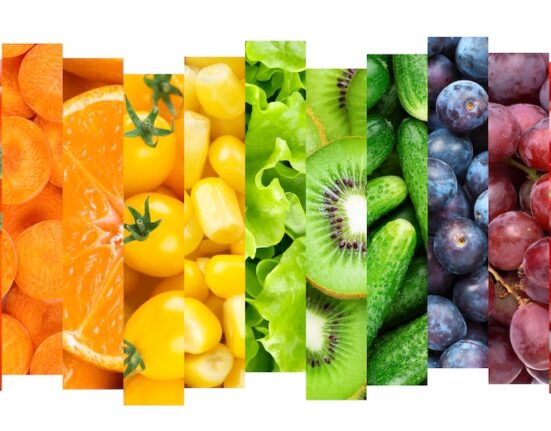In supermarkets around the world, a quiet revolution is taking place in the produce aisles. From watermelons to mandarins and table grapes, once-familiar fruits are being transformed as new and improved seedless varieties that are gradually replacing their seeded counterparts. This shift is largely driven by consumers’ desire for convenience and the need to enhance the eating experience to boost sales.
One of the latest fruits to join this trend is the lemon. Known for its vibrant color and zesty flavor, the lemon has long been a staple in kitchens worldwide. However, despite its popularity, the lemon has also been a source of frustration for both home cooks and professional chefs, with its small, stubborn seeds often sneaking into dishes.
Enter The Wonderful Company, a powerhouse in the agricultural sector best known for Wonderful Pistachios, POM Wonderful, and its ubiquitous Wonderful Halos mandarins. The company is now leading the charge to replace traditional lemons with a more user-friendly, seedless variety. The Los Angeles-headquartered organization’s ambitious efforts could forever change how consumers interact with one of the world’s most beloved fruits.
The company launched its seedless lemon program in 2019, building on a discovery made by farmers in Australia and South Africa, who, after years of studying various lemon buds and using innovative, non-GMO breeding techniques came upon a seedless lemon tree in their orchards. Now, The Wonderful Company has the exclusive rights to grow and distribute in the U.S.
Today, Wonderful Seedless Lemons is rapidly expanding in California’s San Joaquin Valley, with exponential growth year after year. The company says its seedless lemons have contributed 100% of the growth in the bagged lemon category for two years in a row and have distribution in 21,000 stores nationwide. And it has ambitious targets in sight. In 15 years, it wants its exclusively licensed, seedless variety to control 25% of the U.S. fresh lemon market, which would translate to 400 million pounds worth $370 million.
According to Dave Rooke, senior vice president of sales at Wonderful Citrus, supermarket shelves are being cleared of seedless lemons as quickly as they are stocked. During a tour of the company’s 750,000-square-foot processing facility in Delano, CA—which houses two plants where Wonderful Halos mandarins, oranges, and lemons are processed—Rooke notes, “If you’re a heavy lemon user, you understand how annoying seeds are. The fact that you don’t even have to think about them is definitely a game changer.”
With a sequential yearly plan for planting seedless trees and an expansion into Mexico currently underway, the company is now at about one-third of the full-scale production and distribution it envisions for this variety. Achieving a year-round supply will require further optimization of its portfolio and improvements in fruit processing capabilities.
“We’re expanding to allow for year-round capabilities and minimizing touchpoints to maintain quality,” says Rooke. “There is huge potential, and the one thing holding us back is the age of the trees, but as they mature, we will have more and more volume.”
Seedless Lemons and the Consumer Experience
Around 2012, Wonderful Citrus was experiencing strong growth in its mandarin business, as consumers increasingly favored the newer, seedless varieties. This success led the company to explore other products that could be similarly enhanced.
At the time, seedless lemon varieties from Australia and South Africa were already being cultivated outside the United States, offering customers a better experience. This concept ignited a decade-long journey for Wonderful Citrus to develop seedless lemons, eventually leading to their significant presence in the market.
Zak Laffite, president of Wonderful Citrus, has a bold vision for the seedless concept—he thinks it’s crucial to ensure customers never return to seeded lemons. “Once you move away from seeded lemons, I need to make sure you never go back,” he says.
However, he acknowledges that their success hinges on maintaining a consistent supply, ensuring that whenever a customer seeks a seedless lemon, they can easily find one. In May 2023, Laffite visited new seedless lemon plantations in Mexico, where the company is cultivating young, developing plants. “Once these catch up, we’ll be able to provide a 52-week supply,” Laffite said at the time. Currently, the seedless variety is available year-round but with limited distribution during the summer months.
“The realistic expectation is that we are going to attract current lemon consumers and upgrade them,” he explains. “About 10% of lemon consumers are very heavy users, including my household, and they represent more than a quarter of the total consumption. Those are the customers we’re targeting because they’re the ones who are tired of seeds in their guacamole or iced tea.”
Despite the slight price difference between seeded and seedless lemons—just a few cents per pound, according to Laffite—frequent users are willing to pay for the convenience of not dealing with pesky seeds. This aligns well with how Wonderful has designed the marketing for its product.
Laffite explains that Wonderful Citrus is promoting an experience, telling Americans that with seedless lemons, they can eliminate the hassle of cooking and save time in the kitchen. Additionally, the fruit is verified by the Non-GMO Project, a Washington-based non-profit organization.
Learning From the Past
Wonderful Citrus’s flagship product, the seedless mandarin brand Wonderful Halos, has become a star in the produce aisles. As Halos gained popularity in the mid-2010s, the company learned valuable lessons along the way, which are now helping to smooth the path for seedless lemons.
One key lesson, Laffite says, was the company’s initial reluctance to invest in foreign markets. When U.S. consumption began to rise rapidly, he explains, “We had no need to go international; we were selling everything domestically. Why would we make things more difficult?”
However, the success of Halos eventually led to a new challenge: overproduction. “When we hit that tipping point, where U.S. demand could no longer keep up with production, we hadn’t made the necessary international investments to open new markets,” says Laffite. “With seedless lemons, we plan to jump into the international arena early, especially since this is a unique product with universal appeal. We can position it as a superior lemon in global markets.”
Laffite acknowledges that each country will present its own challenges, but he is optimistic that high-use consumers in every importing country will embrace the product, positioning it as a preferred option for all.
Looking ahead, Laffite sees maintaining quality while increasing production volumes as one of the biggest challenges for the entire segment. “You don’t want to lose a repeat sale. You can have beautiful fruit, but if it doesn’t taste good, the consumer will go elsewhere,” he says. “The challenge is: how do we collectively become good custodians of the citrus experience? Because the only way to grow consumption is by putting a quality product on the shelf.”
He notes that with steadily rising production costs, relying solely on price and promotions is not sustainable in the long term, even though they may work in the short term.
Balancing supply and demand is another crucial aspect for the industry, as increased imports do not always translate to sales. Additionally, market fragmentation, driven by the growing number of suppliers, poses a significant risk to quality. As Laffite points out, while volume can keep businesses afloat, it often comes at the expense of important industry standards.
Seedless Takes Over
Seedless watermelons are another example of how seedless varieties can come to dominate a market. Initially challenging for farmers due to the need for pollinators, seedless watermelons have now become the standard in the U.S., thanks to advancements in agricultural practices.
Today, more than 85% of U.S. watermelon production consists of seedless varieties, with Florida, Georgia, Texas, and California leading in production. Like seedless lemons, the fruit is marketed around the convenience of biting into a fruit without seeds, enhancing the customer experience.

Mark Arney, CEO of the National Watermelon Promotion Board (NWPB), explains that while seedless watermelons were first developed around half a century ago, they have taken over the industry in recent years. In the fresh-cut market, for example, seedless watermelons are preferred because packers save money on weight compared to seeded varieties.
“There was a transition period when growers began planting seedless watermelons, but since they are not self-pollinating, it posed a challenge,” says Arney. “Growers had to plant every third row with seeded watermelons, leaving about 25% of the crop still seeded.”
This challenge has since been overcome with the use of nonbearing pollinators in the fields, eliminating the need to plant seeded watermelons. “Because these pollinators are not harvestable, it requires less field labor,” says Arney.
Although there is still some demand for seeded watermelons, the number of growers producing them has significantly decreased. Not only has variety innovation progressed, but the overall quality of the product has improved to the point where many now consider seedless watermelons to be tastier than their seeded counterparts.
“A quality watermelon has a good brix-to-acid ratio and firmness, which scientists have successfully optimized, creating consistently excellent watermelons. They are sweet and firm, with a great balance, similar to other hybrids,” notes Arney.
The widespread success of seedless watermelons highlights the potential for seedless lemons—and other fruits—to capture significant market share by enhancing the consumer experience.
A Seedless Future
Globally, seedless fruits are increasingly becoming consumer favorites. With advancements in horticultural practices, the potential for developing seedless varieties of almost any fruit or vegetable continues to grow.
As Wonderful Citrus and other companies push the boundaries of innovation, the future of the produce aisle may feature an even broader selection of seedless options, meeting the modern consumer’s growing demand for convenience and quality. The rise of seedless lemons is just the latest twist in this ongoing evolution.





